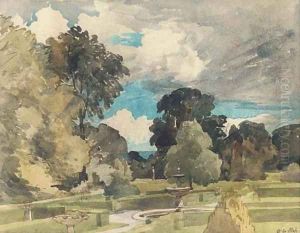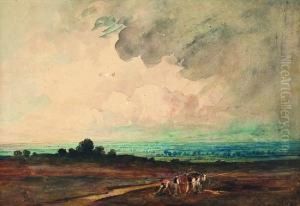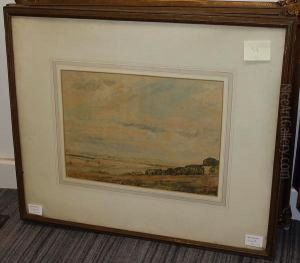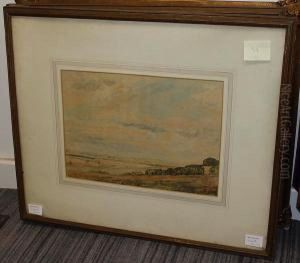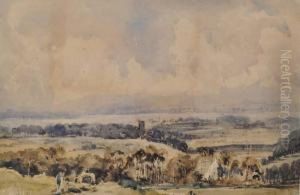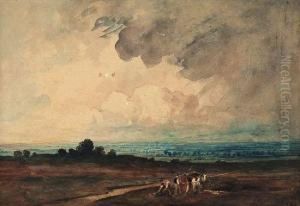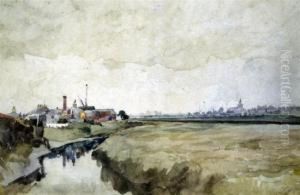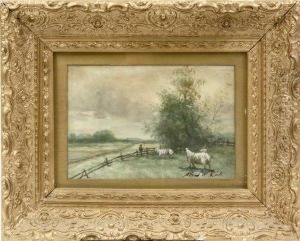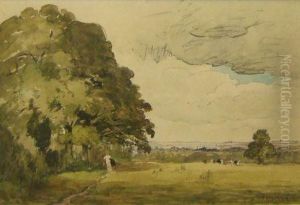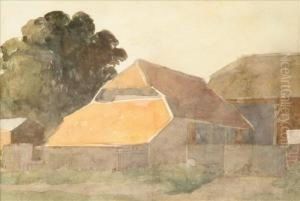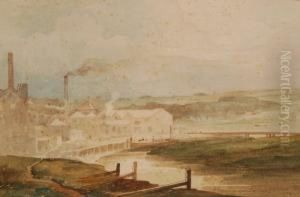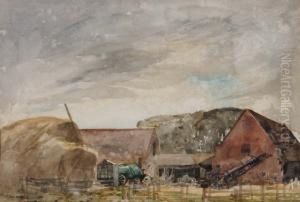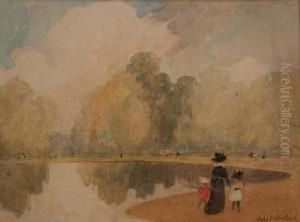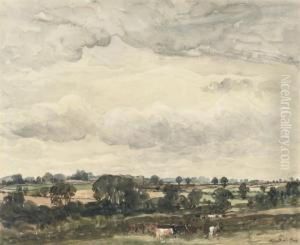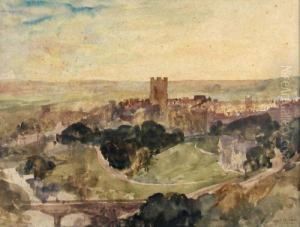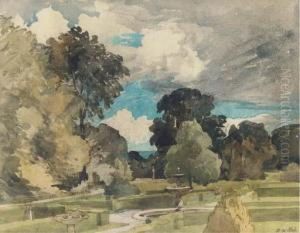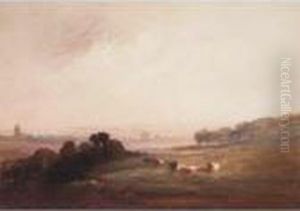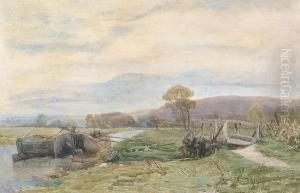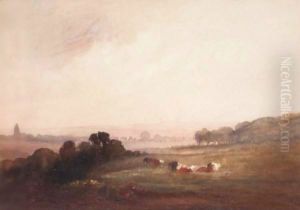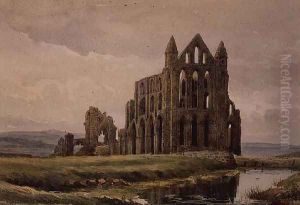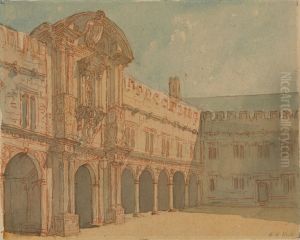Alfred William Rich Paintings
Alfred William Rich was an English watercolour painter and author, born in Liverpool in 1856. He was primarily known for his rural landscapes that showcased the British countryside, particularly the areas of Surrey, Sussex, and Wales. Rich's style was characterized by its delicacy and attention to the atmospheric effects of light and color, which he believed were essential to capturing the essence of a landscape.
Rich did not come from an artistic family, and his initial career path was in the world of commerce. However, his passion for art led him to abandon his commercial pursuits and focus on painting full-time. He sought to study art formally and began his training at the Lambeth School of Art. It was here that he developed his skills and honed his distinctive approach to watercolor painting.
Throughout his career, Rich was a respected member of the art community and was associated with several art institutions. He became a member of the Royal Watercolour Society and contributed regularly to their exhibitions. Rich was also an art educator, teaching at the Clapham School of Art and the Bolt Court School of Art. His instructional book, 'Watercolour Painting', was published in 1918 and became a valuable resource for artists, encapsulating his belief in the importance of sketching from nature and understanding watercolor as a medium.
Alfred William Rich's legacy as an artist is marked by his contributions to the practice and teaching of watercolour painting. His works are characterized by their expressive brushwork and the luminous quality of his colors. He passed away in 1921, leaving behind a body of work that continues to be admired for its technical skill and its evocative portrayal of the English landscape.
